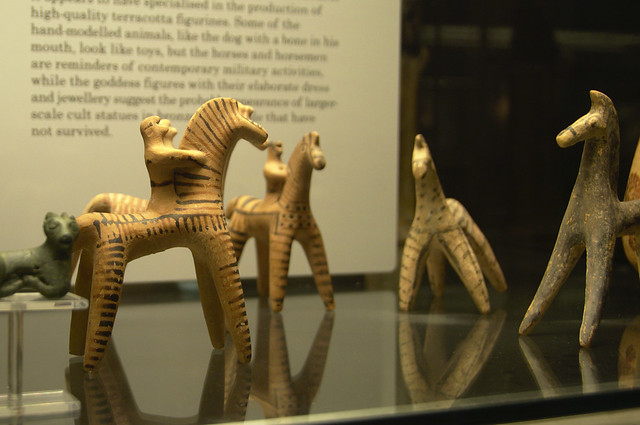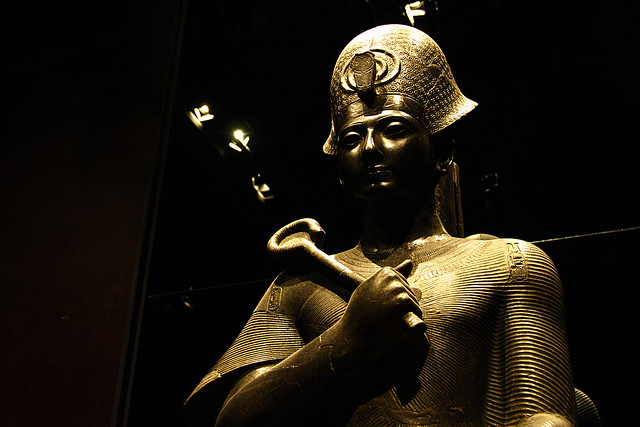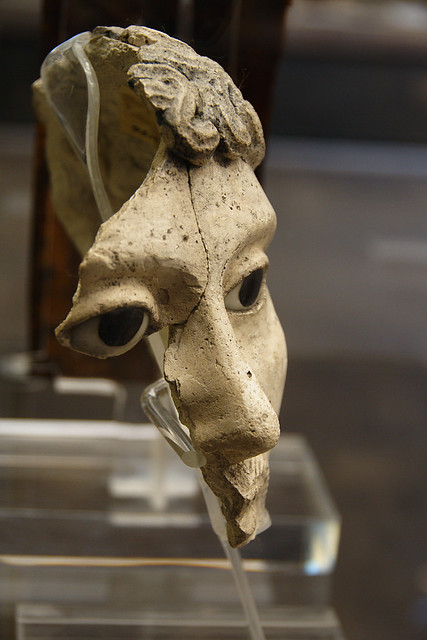The California Gold Rush was sparked by the discovery of gold in a river in January 1848 and not only did it make some individuals rich but it also had a significant impact on the politics and economy of the USA and the world. Discussing it on In Our Time were Kathleen Burk (University College London), Jacqueline Fear-Segal (University of East Anglia) and Frank Cogliano (University of Edinburgh).
When gold was discovered in what would become the state of California the land it was discovered on was not actually under the control of the USA. War between the USA and Mexico ended in February 1848 with the signing of a treaty that had the Mexicans cede that part of the continent to the USA. I imagine once they knew what they’d signed away they weren’t best pleased. At the time the area was inhabited by around 150,000 Native Americans, down from a previous population of 300,000 due to diseases and other effects of the colonisation of the Americas by Europeans. There were also around 6,000 Mexicans and other assorted immigrants.
News of the discovery of gold was initially slow to spread, and didn’t get taken seriously by the outside world until late 1848. Thus the gold rush proper was in 1849 – and until I listened to this programme I hadn’t really put two & two together and realised that the song Oh My Darling Clementine refers to the gold rush (“In a cavern, in a canyon, Excavating for a mine, Dwelt a miner forty niner, And his daughter Clementine.”).
In 1849 the population of the area increased significantly – by 1850 there were 100,000 settlers who had been drawn there by the gold. Most of the new immigrants were young men looking to get rich. The region was not yet a state, and it had none of the apparatus of government – amongst other things no law enforcement nor even laws. One of the experts described it as like “a stag party, they came and trashed California”. Most came to mine gold and hopefully make their fortunes that way, but those who came to sell supplies (mining equipment & food alike) to the miners were the ones who were most likely to become rich. This second category included Leland Stanford, who founded Stanford University.
These new settlers came from all over the world. From all 21 states of the USA and from 25 other countries. Not just Europeans either, there were settlers from various South American countries and from China. The journey to the territory was an arduous one no matter where you were coming from, and particularly so from Europe or the East Coast of the USA. By land it took 5 months, and there are few places where it’s possible to cross the Sierra Nevada mountains. By sea – you could cross the Pacific from China, or sail round the bottom of South America, or cross the continent at Panama (by land, the canal is not there yet) – all of which options have their difficulties and dangers.
The scale of mining operations progressed quickly. At first the stereotypical image of the lone miner panning for gold in a river was pretty accurate, and it was possible for individuals to set up on their own and strike rich. But as time went on mining techniques became more intensive and required more capital to set up. No longer did a lone incomer have much of a chance of getting his lucky strike on his own. As it became more industrialised it also became more destructive. By this I mean they were doing things like diverting rivers and blowing up parts of the mountains in order to extract more gold. As well as this physical destruction of the environment there was also a lot of mercury used in the gold extraction processes – which ended up in the rivers of California.
California may’ve started out as a lawless place in 1849 but it became incorporated as a state of the USA very quickly. In 1852 they had got themselves organised and went to the Senate with their constitution already written and asked to be made a state. At this point they already had double the number of people necessary to be considered. This had an unforeseen knock-on effect – they were the 31st state and were a free state. At this point in the USA’s history tensions were rising between the North (free states) and the South (slave states) although it would be another few years before the Civil War broke out in 1861. To ease the tension states were being admitted in pairs, one slave and one free at a time. However California’s swift self-organisation side-stepped around that procedure and unbalanced the Senate. Utah and New Mexico were admitted as slave states to re-balance it but didn’t actually have a slave owning economy.
And in a reminder that the issues are never simple: despite being a free state California is actually one of the first to enact institutionally racist laws. One axis of this is the regulation specifically of Chinese immigration. Another is protection and governance laws concerning the Native American population. Despite the idealistic name these laws actually disenfranchised and dispossessed Native Americans. There was also official encouragement of the lynching of Chinese & Native Americans who “stepped out of line”.
Obviously the biggest effect of the gold rush was on the economy – not just of California and the USA but also globally. For instance one of the experts made a case that the gold rush was critical for the Industrial Revolution in the UK. If there had not been more people with more money to buy the goods that the newly mechanised UK industry was producing then it would not have happened so fast or so succesfully.
The gold rush also affected the culture of the USA. For instance the American Dream mythology began as a spiritual Puritan vision of the City on the Hill being a shining beacon of virtue for the rest of the world to look up to. But after the gold rush this changes to a more material idea – you don’t go to the USA (or to the West Coast) to live the best life you can, you go to get rich quick. California still occupies this sort of cultural space – you go to California to [find gold]/[be a film star]/[join a tech startup] (delete as appropriate). Hollywood and Silicon Valley are the descendants of the strike it lucky & get rich quick ethos of the gold rush.
Towards the end of the programme they talked a little about the role of women in this era of California’s history. The main point they brought out was that there weren’t many women, and so in some ways their social capital was higher than in other parts of the USA. The example used was that divorce was easier for a woman to initiate. I’d’ve liked it if they’d spent a bit more time on this – my notes that I’m writing this up from say that I thought they had more to say about the knock-on effects of this on modern US society.


